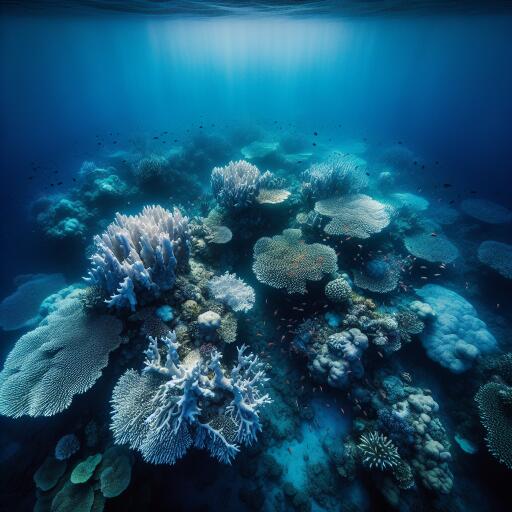
Coral bleaching found in northern Great Barrier Reef
In a recent study conducted by marine scientists, alarming levels of coral bleaching have been observed at the northern end of the Great Barrier Reef, primarily at locations around the Turtle Group National Park, situated roughly 10 kilometers off Queensland’s coast. Surveys revealed that, with a few exceptions in deeper areas, the vast majority of corals exhibited signs of stress and bleaching, setting off alarms for environmental and marine experts.
The phenomenon of coral bleaching occurs under stress conditions, mostly attributed to increased ocean temperatures. Corals, in response to heat stress, expel the symbiotic algae residing in their tissues, losing their vibrant colors and turning white. This does not immediately spell death for the coral; there is potential for recovery should the water temperatures decrease promptly.
“Observing the extensive bleaching, especially in shallow waters, was disheartening,” remarked the lead researcher, who is deeply involved in the study of these critical marine ecosystems. “However, there is still hope for these corals if the water temperatures can drop in time allowing them to recover.”
Spanning approximately 2,300 kilometers along the northeastern coastline of Australia, the Great Barrier Reef is a vital marine habitat, having endured five significant bleaching events within the past eight years alone. These occurrences are increasingly being linked to the adverse effects of climate change, marking a troubling trend for one of the planet’s most biodiverse regions.
The recent inclusion of the six islands within the Turtle Group into the university’s comprehensive monitoring efforts marks a significant expansion in the scope of ongoing research. This new data will play a crucial role in understanding the multifaceted impacts of bleaching, cyclones, and floods on these delicate coral ecosystems.
Researchers stressed the importance of long-term monitoring in the face of climate change, indicating that “as predictions point to more frequent and intense disturbance events, the need for ongoing, future-focused surveillance has never been more critical.”
Responding to these findings, a spokesperson from Australia’s Climate Council likened the situation to “an underwater bushfire,” signaling the urgent need for action to mitigate the escalating threats to the reef. These disruptions suggest we may be approaching critical tipping points in our climate system, beyond which recovery could become increasingly challenging, if not impossible.
The Great Barrier Reef, a jewel in the crown of the world’s oceans, faces an uncertain future. As these bleaching events become more common, the call for immediate, meaningful action to address the root causes of climate change grows louder. It is a poignant reminder of the intricate connection between our planet’s health and our own survival.





Leave a Reply